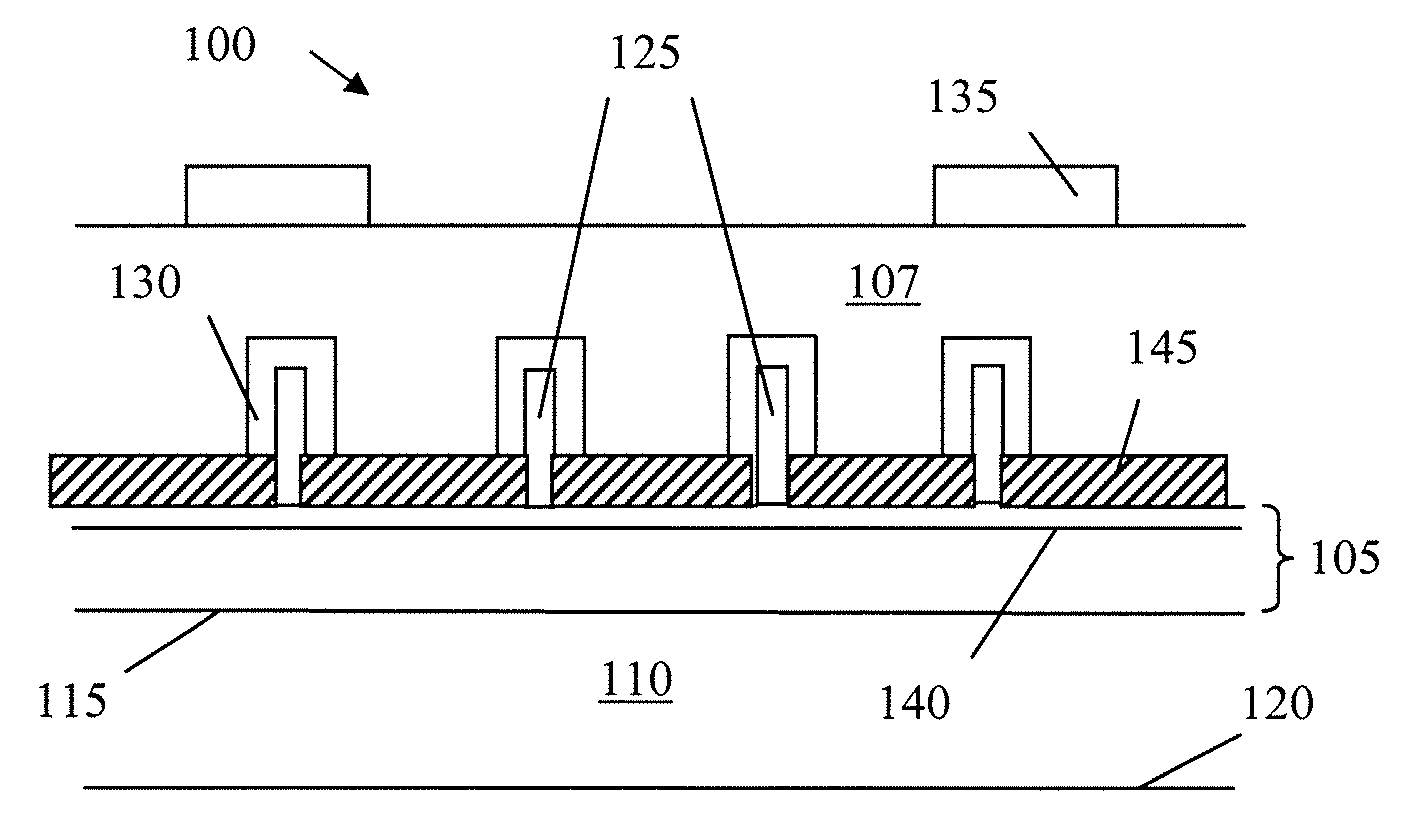Multilayered Film-Nanowire Composite, Bifacial, and Tandem Solar Cells
a solar cell and composite technology, applied in the field of solar cells, can solve the problems of preventing the widespread use of such solar cell technology, unable to meet the needs of bifacial and bifacial fusion, and no one is efficient enough to significantly reduce the cost involved in the production and use of this technology, and achieve the effect of preventing shorting
- Summary
- Abstract
- Description
- Claims
- Application Information
AI Technical Summary
Benefits of technology
Problems solved by technology
Method used
Image
Examples
Embodiment Construction
[0024]In some embodiments, a photovoltaic (PV) device may include, but is not limited to: (1) a multilayered film disposed on a substrate (2) elongated nanostructures, which may be disposed on the top layer of the multilayered film, and (3) at least one layer disposed over the elongated nanostructures. These layers disposed over the elongated nanostructures may be conformally disposed over the elongated nanostructures. The various layers of the multilayered film and the layers disposed about the elongated nanostructures may form portions of photoactive junctions, such as p-n and p-i-n junctions, for example. These photoactive junctions may be stacked with tunnel junctions separating each cell in the multi-junction array. Each cell in the multi-junction array may be arranged in series and may include p-n junctions, p-i-n junctions, and combinations thereof. In some embodiments, the elongated nanostructures may be part of a photoactive junction and be appropriately doped with p-dopant...
PUM
 Login to View More
Login to View More Abstract
Description
Claims
Application Information
 Login to View More
Login to View More - R&D
- Intellectual Property
- Life Sciences
- Materials
- Tech Scout
- Unparalleled Data Quality
- Higher Quality Content
- 60% Fewer Hallucinations
Browse by: Latest US Patents, China's latest patents, Technical Efficacy Thesaurus, Application Domain, Technology Topic, Popular Technical Reports.
© 2025 PatSnap. All rights reserved.Legal|Privacy policy|Modern Slavery Act Transparency Statement|Sitemap|About US| Contact US: help@patsnap.com



